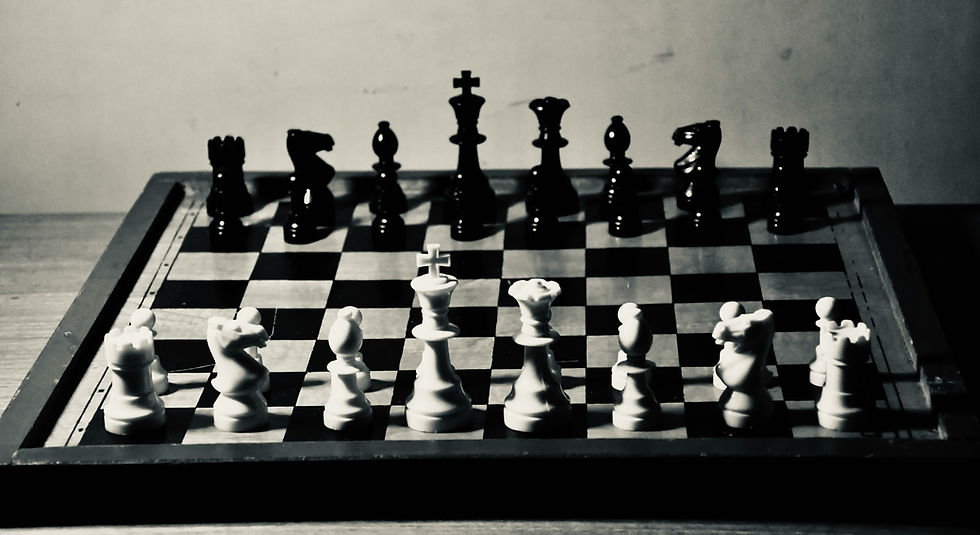The Power of a Present Leader in a Burned-Out Workplace
- The Purposeful Project
- Aug 3
- 3 min read
In times of exhaustion and overwhelm, the most radical thing a leader can offer isn’t more strategy—it’s presence.
Key Takeaways
➡️ Burnout isn’t just about workload—it’s about disconnection. When leaders are absent in spirit, teams lose their sense of grounding.
➡️ Presence shifts the culture. A leader who listens deeply and models stillness creates space for collective resilience.
➡️ Awareness is the new edge in leadership. In a distracted, overworked world, presence is not a luxury but a form of power.
Workplace burnout is everywhere. Long hours, relentless demands, and an endless parade of Zoom calls have left many professionals running on fumes. But beneath the surface of fatigue lies something deeper: a sense of disconnection. Disconnection from meaning, from one another, and from ourselves.
When a workplace feels like this, what makes the difference isn’t a new policy or another productivity tool. It’s leadership—not in the traditional sense of charisma, but in the quiet courage of presence.
Eckhart Tolle, in The Power of Now, suggests that true transformation begins with awareness. Applied to leadership, that awareness becomes a balm in burned-out environments—reminding people that they’re human beings, not just human doings.
1. Burnout Thrives in the Absence of Presence
Most leaders focus on solving burnout by tackling external symptoms: reorganizing schedules, offering wellness perks, or pushing for efficiency. While helpful, these don’t address the root. Burnout often emerges because people feel unseen and unheard. When leaders are physically present but mentally elsewhere—thinking three steps ahead, distracted by their phones—the team feels it.
Presence, by contrast, grounds a workplace. When a leader walks into a meeting fully there—not multitasking, not half-listening—they signal something vital: you matter, and this moment matters. That shift alone can start to loosen the grip of exhaustion.
2. The Transformative Ripple of a Present Leader
Presence is contagious. A leader who listens without rushing invites their team to slow down too. A manager who pauses before reacting to a problem shows that calm is possible even under pressure. This isn’t just soft-skill philosophy—it shapes culture.
Tolle describes presence as the state beyond the mind’s compulsive noise. In the workplace, that translates to clarity. When a leader isn’t clouded by stress or ego, decisions become sharper, communication cleaner, and trust stronger. The ripple effect is real: people begin to feel less like cogs in a machine and more like humans in a shared mission.
In a burned-out workplace, that ripple is nothing short of radical.
3. Awareness as the New Leadership Edge
Traditional leadership once hinged on authority, then shifted to vision. Today, in a world drowning in distraction and fatigue, the new edge is awareness. Leaders who can remain centered amidst chaos aren’t just healthier themselves—they become stabilizing anchors for their teams.
Practicing presence doesn’t require day-long retreats or lofty speeches. It can be as simple as pausing before a meeting, taking a conscious breath, and choosing to really see the person across the table. Those small moments of attention are often what employees remember most.
As Tolle reminds us, the present moment is all we ever have. For leaders, embracing this truth means cultivating a workplace that values being as much as doing—an environment where people can breathe again.
Burned-out workplaces don’t heal through more hustle. They heal when someone dares to embody presence. A present leader doesn’t just manage tasks—they restore humanity to the workplace.
In the end, the most powerful thing you can offer your team isn’t endless energy or flawless strategy. It’s your attention, your stillness, your presence. Because when you show up fully, you give others permission to do the same—and that may be the greatest leadership act of all.




Comments